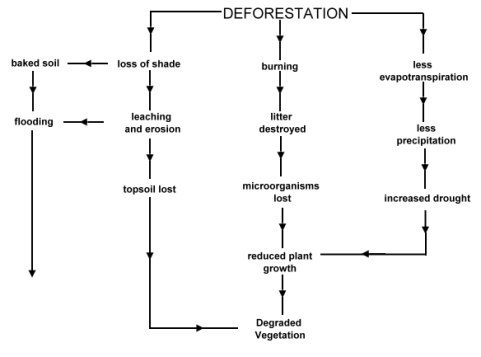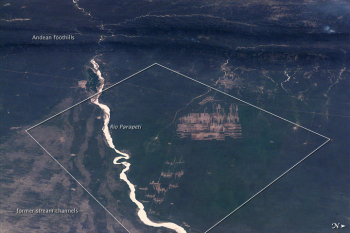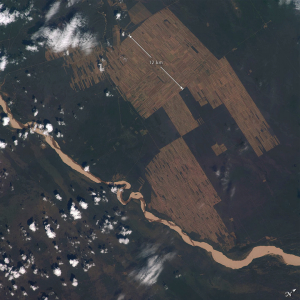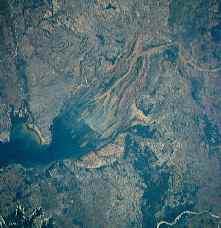Digging Deeper: Human Activities and The Tropical ForestsDeforestation in the Tropical Forests
Human activity has drastically altered the natural distribution of forests through history. Deforestation and habitat destruction is severely crippling the rain forest ecosystem. Rain forests are being destroyed at a rate of 78 million acres (31 million hectares) per year; an area larger than Poland. With habitat destruction comes loss of species. The World Resources Institute predicts that deforestation rates of 15 million hectares would reduce species in the closed canopy forests by 35% by 2040. In Brazil, the estimated average rate of destruction between 1979 - 1990 was 5.4 million acres per year. In 2003 a record 10,000 square miles of Brazil was cleared (Lobe, 2004). Deforestation causes a multitude of effects on the natural environment as shown below. Vegetation is degraded due to a loss of nutrient-rich litter and microorganisms to decompose organic matter. The loss of shade accelerates leaching, soil erosion and drying. The hard surface caused by baking impedes water infiltration causing excess runoff and flooding. In addition to the effect on the local vegetation and hydrology, forest removal impacts atmospheric composition, evapotranspiration, and precipitation.
Figure DD.3 Effects of deforestation (after
Drew,1983) Soil degradation from forest clearing for agriculture happens quickly. Soil fertility can decrease by 80% in only a few years after forest removal. Soil fertility loss due to forest clearing (Drew,1983)
Government policies in some countries have fostered the exploitation of forest resources. Encouraging the population to develop forest land has opened the forest to continued degradation. In the 1990's the Bolivian Government began a large-scale program to increase the rate of forest removal for commercial agriculture (primarily soy and sugar cane, but also cocoa) on the Amazon Basin side of the Andean highlands. The dramatic effect of this action is seen in Figures BE21a and BE21b. Forest clearings began as small tracts perpendicular to access roads taking on a herringbone pattern when seen from the Space Shuttle in 1995. By 2008, the cleared area has greatly expanded. The impact of clearing on soil erosion and stream sediment load is evident in the brown, silt-laden Rio Parapetí that flows through the region.
|
|||||||||||||||||||||||||||
The heavy seasonal rain of the monsoon forest poses a great danger, generating rapid runoff, mudflows and flash flooding. A result of unregulated deforestation, rivers become choked with sediment degrading the aquatic environment. Deforestation has had a significant impact on indigenous cultures too. Six to nine million indigenous people inhabited the Brazilian rain forest in 1500. Today less than 1% of Brazil's 177 million people are full-blooded indigenous Indians (Source: US State Department). The loss of indigenous cultures destroys a wealth of knowledge about the environment in which they lived. |
|||||||||||||||||||||||||||
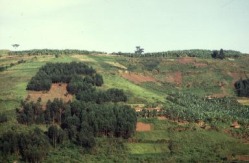 Figure DD.2 Land clearing for agriculture on steep slopes in Uganda
(Courtesy FAO).
Figure DD.2 Land clearing for agriculture on steep slopes in Uganda
(Courtesy FAO).